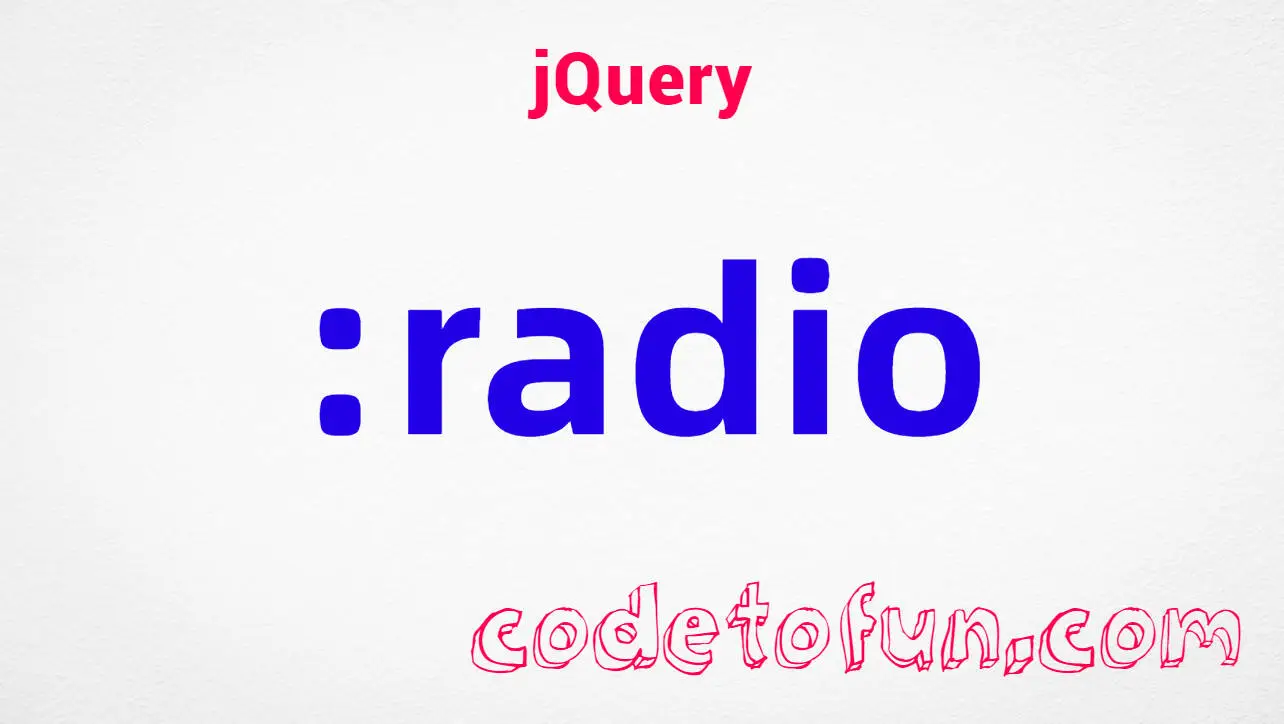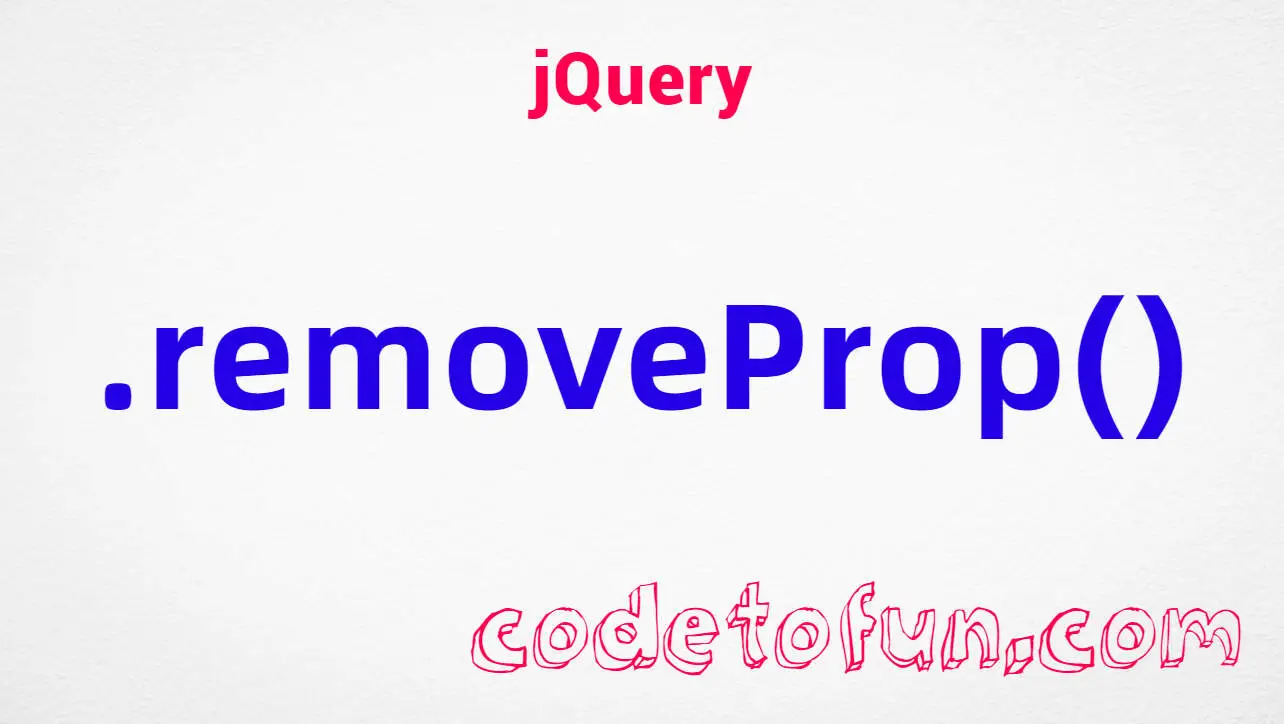
jQuery Selectors
jQuery :radio Selector

Photo Credit to CodeToFun
🙋 Introduction
jQuery empowers web developers with its array of powerful tools for DOM manipulation and event handling. Among these tools is the :radio selector, tailored for effortless targeting of radio buttons within HTML forms. Understanding and harnessing the potential of this selector can significantly streamline your web development process.
In this comprehensive guide, we'll explore the nuances of the jQuery :radio selector through practical examples, empowering you to wield it effectively in your projects.
🧠 Understanding :radio Selector
The :radio selector is purpose-built to target HTML radio buttons, enabling seamless manipulation and interaction. It simplifies tasks such as selecting, styling, and handling events associated with radio buttons within your web forms.
💡 Syntax
The syntax for the :radio selector is straightforward:
$(":radio")📝 Example
Selecting Radio Buttons:
Imagine you have a set of radio buttons and you want to select all of them. Utilize the
:radioselector as demonstrated below:index.htmlCopied<input type="radio" name="gender" value="male" checked> <input type="radio" name="gender" value="female">example.jsCopied$(":radio").each(function() { console.log($(this).val()); });This code will log the values of all radio buttons (male and female) to the console.
Styling Radio Buttons:
Apply dynamic CSS styles to radio buttons using jQuery. For instance, let's change the border color of all radio buttons:
index.htmlCopied<input type="radio" name="gender" value="male" checked> <input type="radio" name="gender" value="female">example.jsCopied$(":radio").css("border-color", "blue");This will set the border color of all radio buttons to blue.
Handling Events on Radio Buttons:
Bind events to radio buttons for enhanced interactivity. Here's an example where we alert a message when a radio button is clicked:
index.htmlCopied<input type="radio" name="gender" value="male" id="maleRadio">example.jsCopied$("#maleRadio").change(function() { alert("Male radio button clicked!"); });Disabling Radio Buttons:
jQuery facilitates disabling radio buttons dynamically based on certain conditions. For instance:
example.jsCopied$("#disableButton").click(function() { $(":radio").prop("disabled", true); });This will disable all radio buttons when a button with the ID disableButton is clicked.
🎉 Conclusion
The jQuery :radio selector is a valuable asset for targeting and manipulating radio buttons within your web forms. Whether you need to select, style, handle events, or disable radio buttons dynamically, this selector streamlines the process with its simplicity and efficiency.
By mastering its usage, you can elevate the interactivity and functionality of your web applications seamlessly.
👨💻 Join our Community:
Author

For over eight years, I worked as a full-stack web developer. Now, I have chosen my profession as a full-time blogger at codetofun.com.
Buy me a coffee to make codetofun.com free for everyone.
Buy me a Coffee











